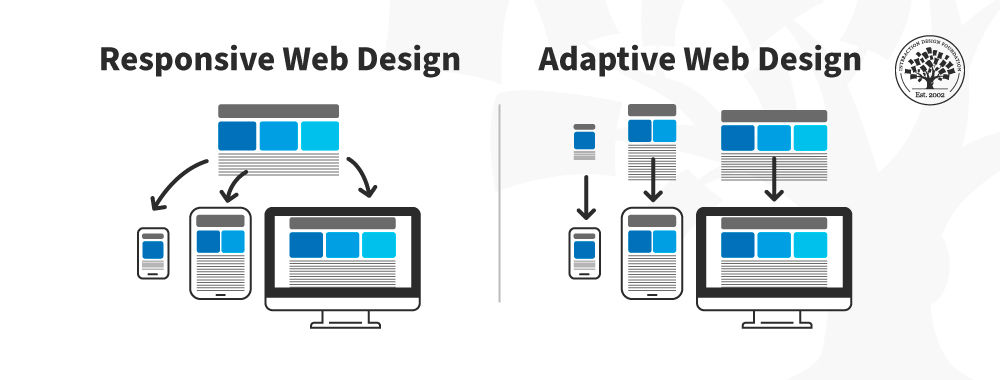A Detailed Summary of the most effective Practices in Website Design for Creating Navigable and user-friendly Online Systems
The performance of an online platform hinges significantly on its style, which should not just bring in users however also direct them perfectly through their experience. Finest practices in website design incorporate an array of techniques, from receptive formats to easily accessible navigation structures, all targeted at cultivating user-friendly interactions. Comprehending these principles is important for designers and developers alike, as they directly effect individual satisfaction and retention. The details of each practice typically reveal deeper implications that can transform a standard user interface into an exceptional one. What are the crucial aspects that can boost your platform to this degree?
Recognizing Individual Experience
Recognizing individual experience (UX) is essential in website design, as it directly influences exactly how site visitors engage with an internet site. A properly designed UX makes sure that users can browse a website with ease, access the details they look for, and complete wanted activities, such as purchasing or authorizing up for an e-newsletter.
Key components of efficient UX style consist of use, accessibility, and aesthetics. Use concentrates on the ease with which users can achieve tasks on the website. This can be achieved via clear navigation structures, logical content company, and responsive comments systems. Access makes sure that all individuals, including those with impairments, can communicate with the web site effectively. This entails sticking to developed standards, such as the Internet Content Ease Of Access Standards (WCAG)
Looks play an important role in UX, as aesthetically appealing styles can boost user satisfaction and involvement. Color plans, typography, and imagery needs to be attentively chosen to develop a cohesive brand name identification while additionally facilitating readability and comprehension.
Ultimately, focusing on user experience in web layout promotes better user contentment, urges repeat brows through, and can substantially enhance conversion rates, making it an essential element of effective electronic approaches. (web design)
Importance of Responsive Layout
Receptive style is an essential component of modern internet advancement, making certain that web sites provide an optimal watching experience across a wide variety of devices, from desktops to smartphones. As individual habits significantly moves in the direction of mobile surfing, the demand for websites to adjust seamlessly to different screen dimensions has actually become critical. This versatility not only improves use however also dramatically impacts user involvement and retention.
A responsive style employs liquid grids, adaptable pictures, and media queries, enabling a cohesive experience that preserves capability and aesthetic integrity regardless of tool. This method removes the requirement for users to zoom in or scroll flat, bring about an extra instinctive communication with the material.
Furthermore, online search engine, notably Google, focus on mobile-friendly sites in their rankings, making receptive design vital for maintaining presence and accessibility. By embracing responsive style concepts, services can reach a broader target market and enhance conversion rates, as individuals are much more most likely to engage with a site that offers a consistent and smooth experience. Ultimately, receptive layout is not simply an aesthetic selection; it is a strategic necessity that shows a dedication to user-centered layout in today's electronic landscape.
Simplifying Navigating Structures
A well-structured navigating system is important for improving the user experience on any internet site. Simplifying navigating structures not just aids individuals in discovering information promptly yet also cultivates involvement and minimizes bounce prices. To achieve this, internet designers must prioritize quality with making use of straightforward tags and visit the website categories that reflect the content properly.

Including a search function better improves use, allowing customers to locate material directly. Furthermore, implementing breadcrumb routes can supply users with context about their area within the website, advertising ease of navigating.
Mobile optimization is one more vital facet; navigating must be touch-friendly, with plainly specified links and buttons to accommodate smaller sized displays. By decreasing the variety of clicks required to access material and guaranteeing that navigating corresponds throughout all pages, designers can create a seamless individual experience that urges expedition and lowers aggravation.
Prioritizing Availability Specifications
Roughly 15% of the international populace experiences some form of handicap, making it important for web designers to focus on accessibility criteria in their tasks. Availability includes different facets, including visual, acoustic, cognitive, and motor disabilities. By adhering to established standards, such as the Web Content Ease Of Access Guidelines (WCAG), designers can produce inclusive electronic experiences that cater to all users.
One essential technique is to make sure that all material is perceivable. This consists of giving alternative text for photos and making certain that videos have records or subtitles. Furthermore, key-board navigability is important, as lots of users count on keyboard shortcuts instead of mouse interactions.
 Furthermore, color contrast need to be carefully taken into consideration to suit individuals with visual impairments, ensuring that message is understandable against its history. When creating types, labels and error messages need to be clear and detailed to aid individuals in completing jobs efficiently.
Furthermore, color contrast need to be carefully taken into consideration to suit individuals with visual impairments, ensuring that message is understandable against its history. When creating types, labels and error messages need to be clear and detailed to aid individuals in completing jobs efficiently.Lastly, conducting usability testing with people who have specials needs can provide invaluable understandings - web design. By focusing on accessibility, web developers not only abide by legal standards but likewise broaden their audience reach, promoting a much more inclusive on-line environment. This commitment to access is crucial for a straightforward and truly navigable internet experience
Using Visual Hierarchy
Clarity in style is critical, and using aesthetic pecking order plays an important function in read what he said attaining it. Visual hierarchy describes the arrangement and presentation of elements in a way that plainly indicates their relevance and overviews user interest. By purposefully employing dimension, shade, contrast, and spacing, designers can produce a natural flow that directs users via the material effortlessly.
Making use of bigger typefaces for headings and smaller ones for body text develops a clear distinction between areas. Additionally, employing contrasting histories or bold colors can draw attention to essential details, such as call-to-action buttons. White room is just as essential; it helps to avoid clutter and permits customers to concentrate on the most vital components, improving readability and total user experience.
One more key element of visual hierarchy is using images. Appropriate pictures can boost understanding and retention of info while also separating text to make content a lot more absorbable. Inevitably, a well-executed visual hierarchy not just boosts navigation but also cultivates an intuitive communication with the site, making it a lot more likely for individuals to attain their goals efficiently.
Verdict

Furthermore, the reliable use of aesthetic hierarchy boosts user involvement and readability. By focusing on these useful link aspects, internet designers can dramatically enhance user experience, making certain that on-line platforms satisfy the diverse requirements of all customers while helping with reliable interaction and complete satisfaction.
The performance of an online system pivots considerably on its layout, which have to not just draw in individuals however likewise direct them effortlessly with their experience. By embracing receptive layout principles, businesses can get to a broader target market and improve conversion rates, as customers are much more most likely to involve with a site that uses a smooth and constant experience. By adhering to developed guidelines, such as the Internet Web Content Accessibility Standards (WCAG), designers can produce comprehensive digital experiences that cater to all individuals.
White space is just as important; it assists to prevent mess and permits customers to focus on the most vital aspects, improving readability and overall individual experience.
By prioritizing these aspects, web developers can considerably improve individual experience, making sure that on-line systems fulfill the diverse needs of all users while promoting effective communication and contentment.